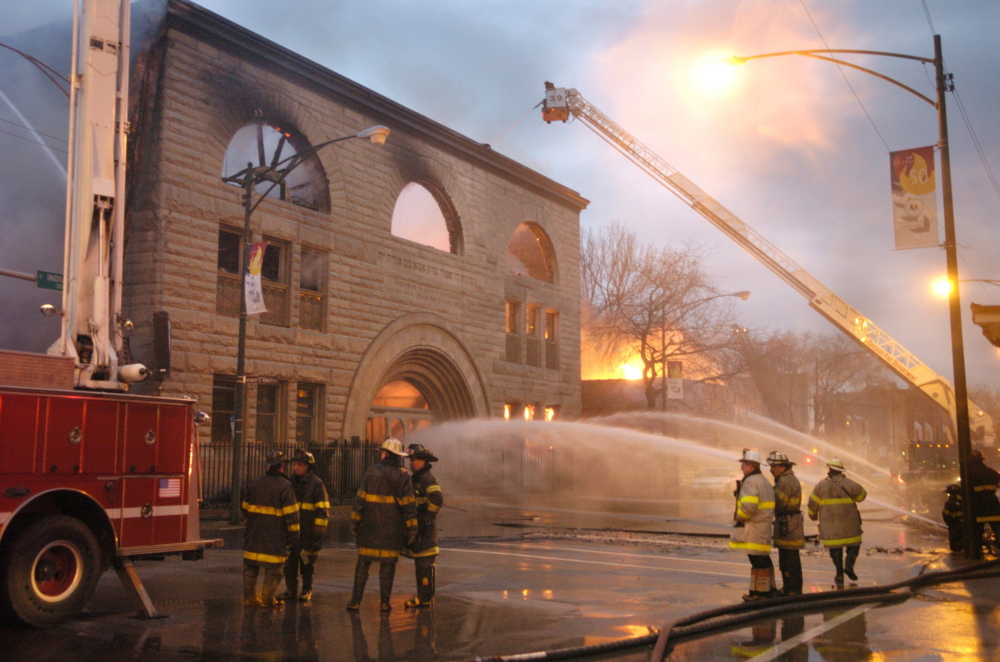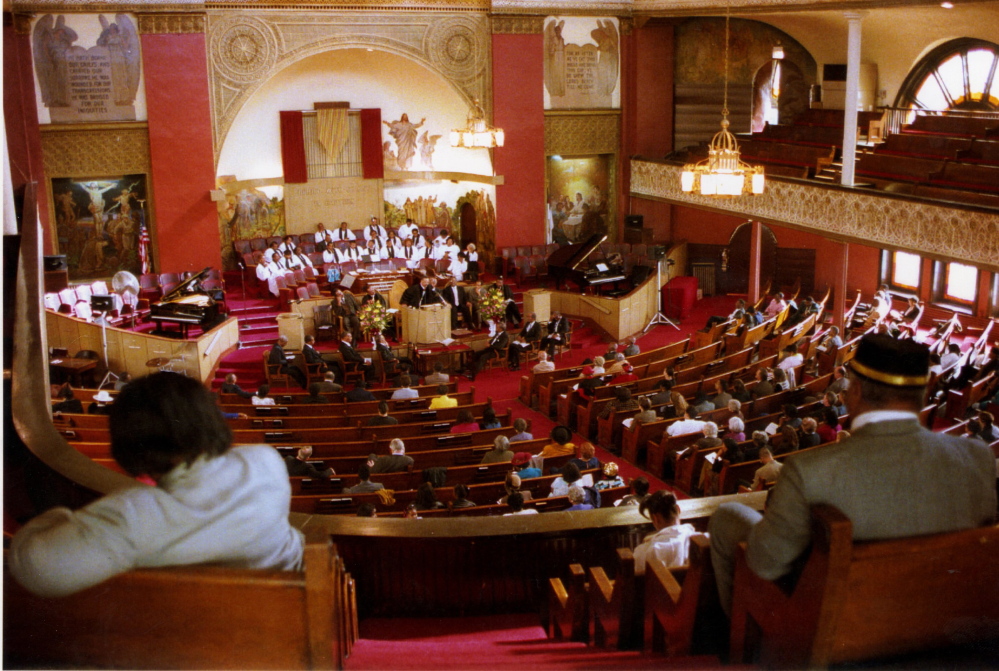CHICAGO — When a fire in 2006 nearly demolished Pilgrim Baptist Church, an architectural treasure by Louis Sullivan that is known as the birthplace of modern gospel music, many Chicagoans insisted that the building had to be restored.
Two years after the fire, architects hired by the Bronzeville neighborhood church’s board of trustees revealed dazzling plans for a $37 million rebuilding project that would include a social services building and a cultural center. At the time, some architectural preservationists questioned how an aging congregation whose membership had declined from its height of 1,000 members to a couple of hundred would be able to undertake such a project.
Now those skeptical voices ring prophetic. Nearly a decade after the blaze, steel bracing that stabilizes the church’s limestone walls offers the only clear evidence that anyone intends to save one of Chicago’s most historic places.
Hopes of a restoration have fallen so far that some architectural preservationists think the only remaining option might be to preserve the surviving walls and turn the site into a park.
Completed in 1891 by Chicago engineer Dankmar Adler and architect Sullivan, the 10,500-square-foot building was originally a Jewish synagogue. Then it became Pilgrim Baptist, where in the 1930s Thomas A. Dorsey blended jazz and blues with religious music to create modern gospel music. In its heyday, Sunday services were standing room only.
“The building was literally in motion and really inspired in terms of the space,” said Tim Samuelson, Chicago’s cultural historian. “Then you combine it with a church service and some of the finest gospel music you’d ever hear anywhere – it’s a place you would never forget.”
Now the building is considered an eyesore, and the bracing blocks the sidewalk around the building at 33rd Street and Indiana Avenue, forcing pedestrians into traffic, according to neighbors. Frustrations have come to a head, they said, as they allege the church’s board of trustees won’t share its plans and is unresponsive to the community.
“We want the church to be either rebuilt, demolished or moved on in some fashion because we need access to the sidewalks there,” said Danny Bishop, a community member who spearheaded a petition to demand an action plan from the church this year. “Over the course of close to 10 years – a decade – they have been disingenuous to the community regarding any rebuilding plans.”
At the very least, the community would like church leaders to place a roof on the building, fill in windows to prevent deterioration and move the stabilization beams inside the walls, according to Leonard McGee, president of The Gap Community Organization.
“The first five years you’re understanding and you’re sympathetic and you try to say, ‘What can we do to help?'” McGee said. “It was a great house of worship, and we would like to see the house of worship restored, but at the same time, how long should we have to wait before we get our sidewalks back?”
Bishop said the community group met recently with the local alderman, Pat Dowell, and they agreed to write a letter demanding a meeting to discuss rebuilding plans, including expenditures and a date when the walls would either be renovated or removed. Dowell’s office said the letter was sent shortly after that.
Church officials have not responded to Tribune requests to explain where renovation plans stand. Cynthia Jones, vice chairman of Pilgrim Baptist Church’s board of trustees, when contacted at the church recently, said she did not see a letter or petition from the community. She declined to comment further, referring questions to Pilgrim Baptist’s attorney, Stephen Pugh.
Pugh declined to comment, citing pending litigation related to the project.
Send questions/comments to the editors.




Success. Please wait for the page to reload. If the page does not reload within 5 seconds, please refresh the page.
Enter your email and password to access comments.
Hi, to comment on stories you must . This profile is in addition to your subscription and website login.
Already have a commenting profile? .
Invalid username/password.
Please check your email to confirm and complete your registration.
Only subscribers are eligible to post comments. Please subscribe or login first for digital access. Here’s why.
Use the form below to reset your password. When you've submitted your account email, we will send an email with a reset code.